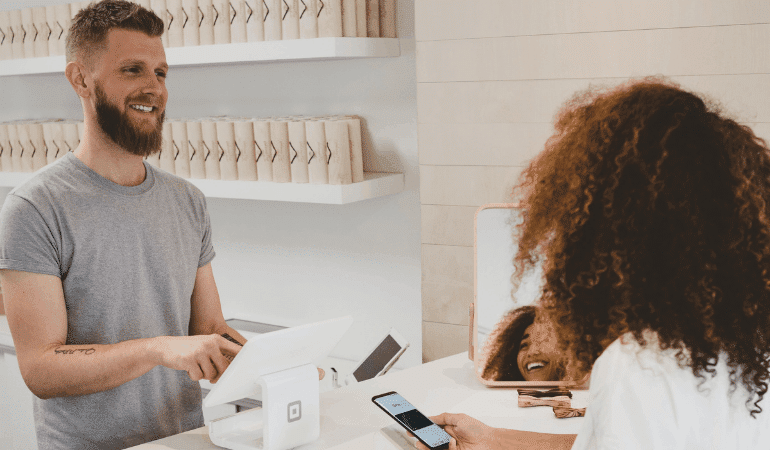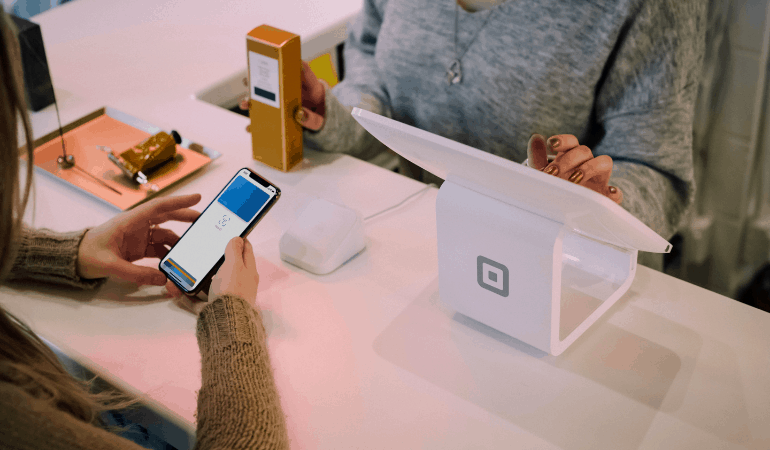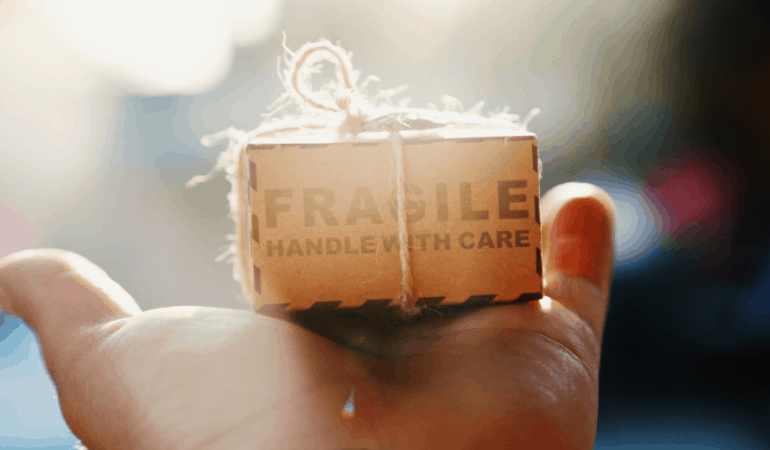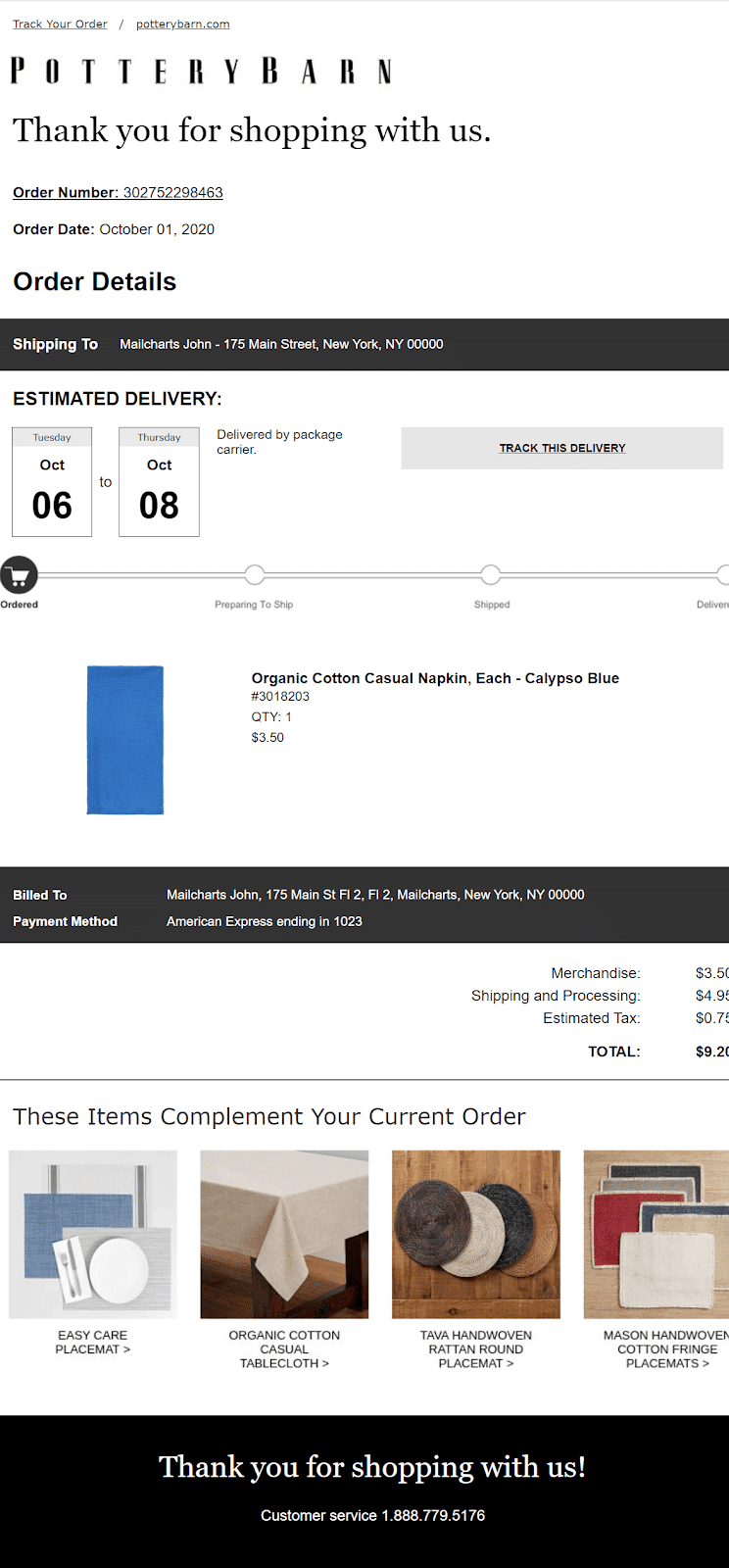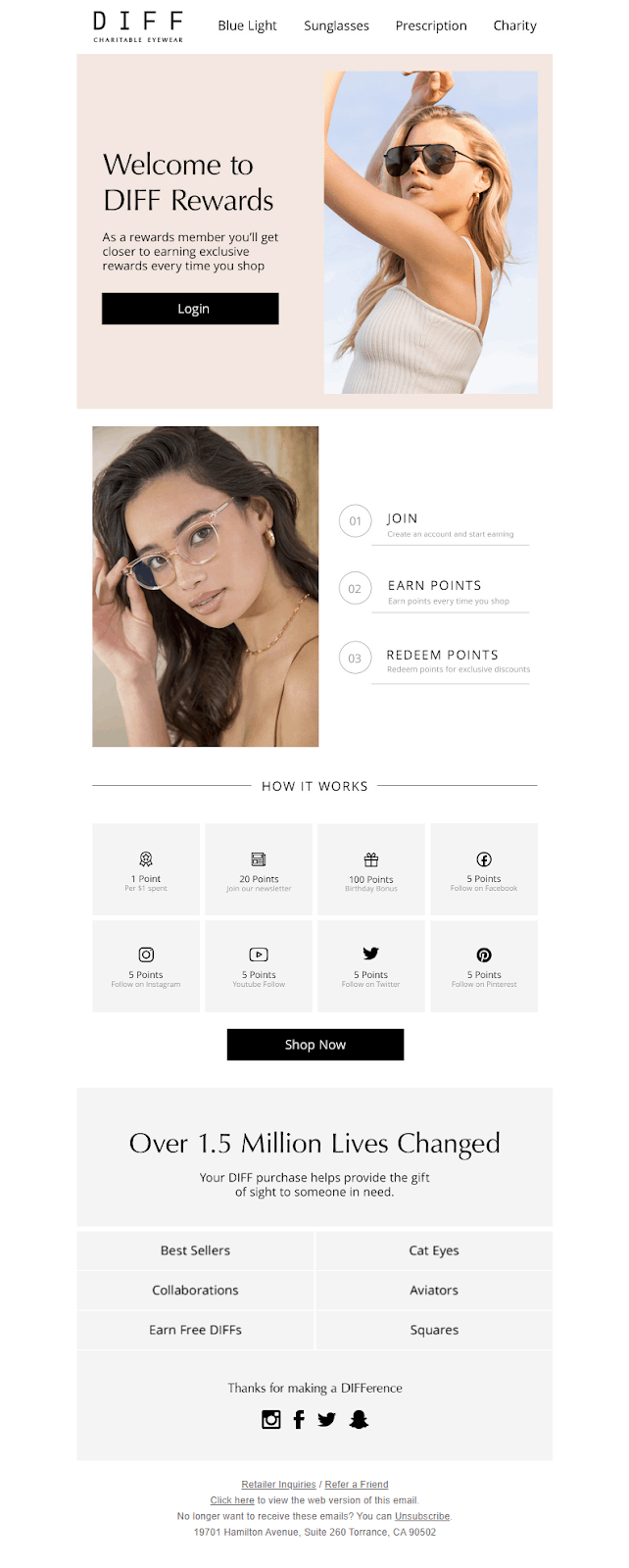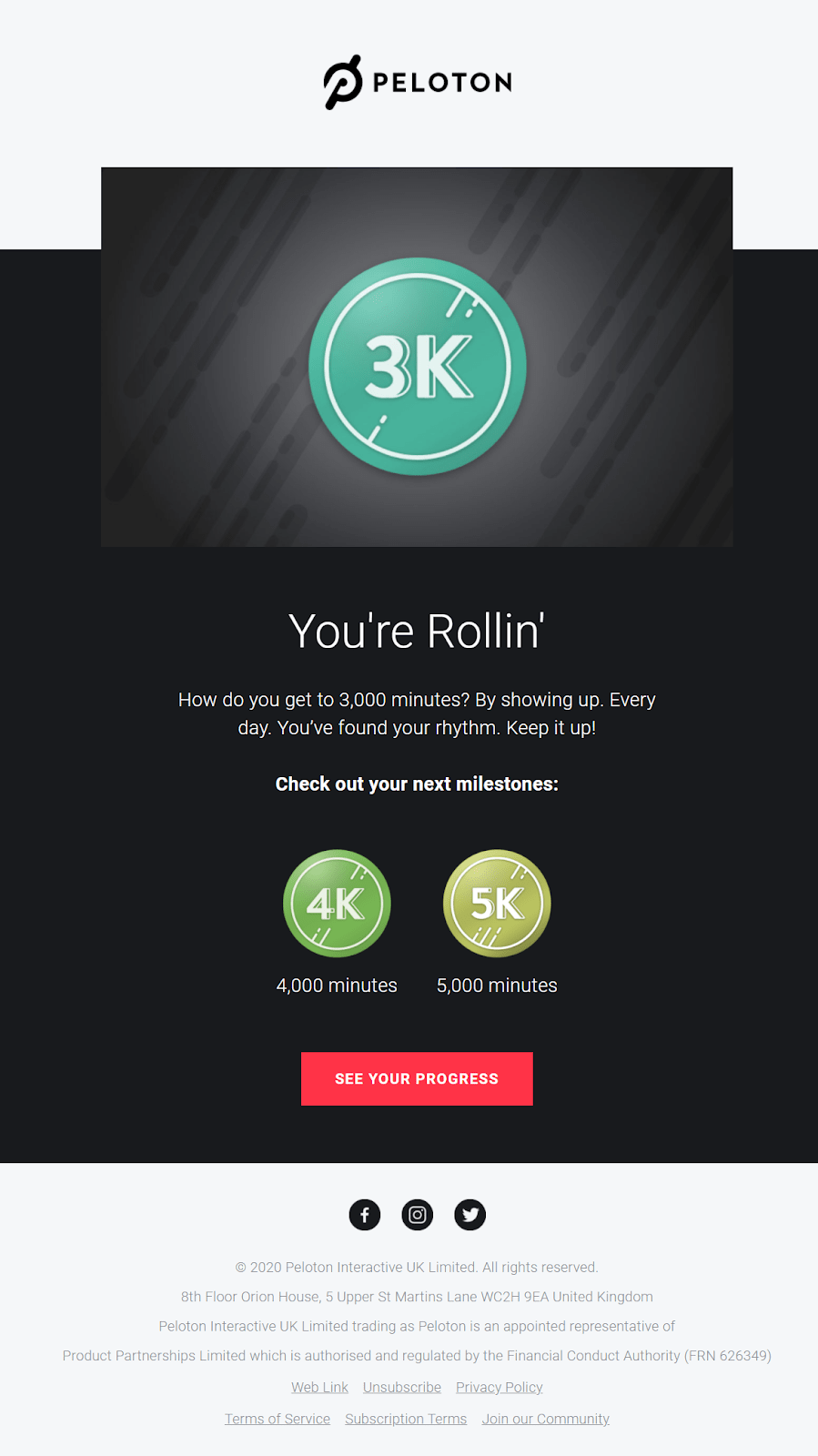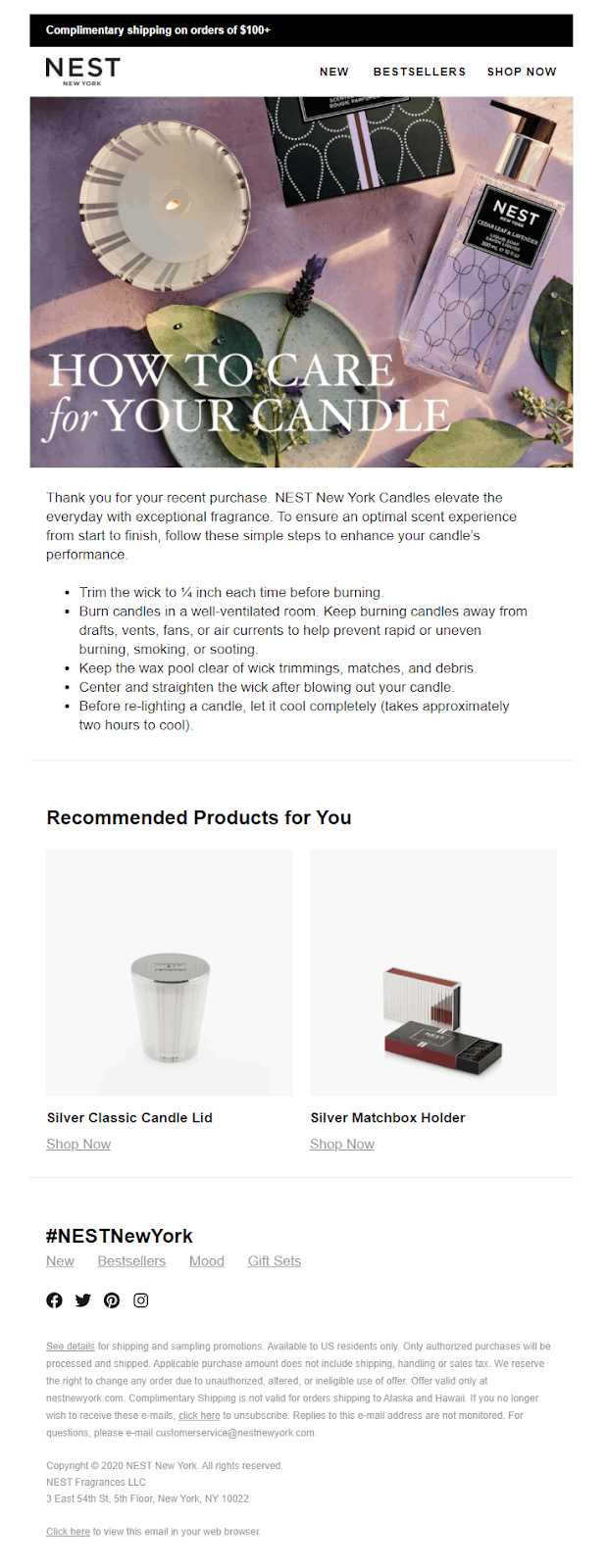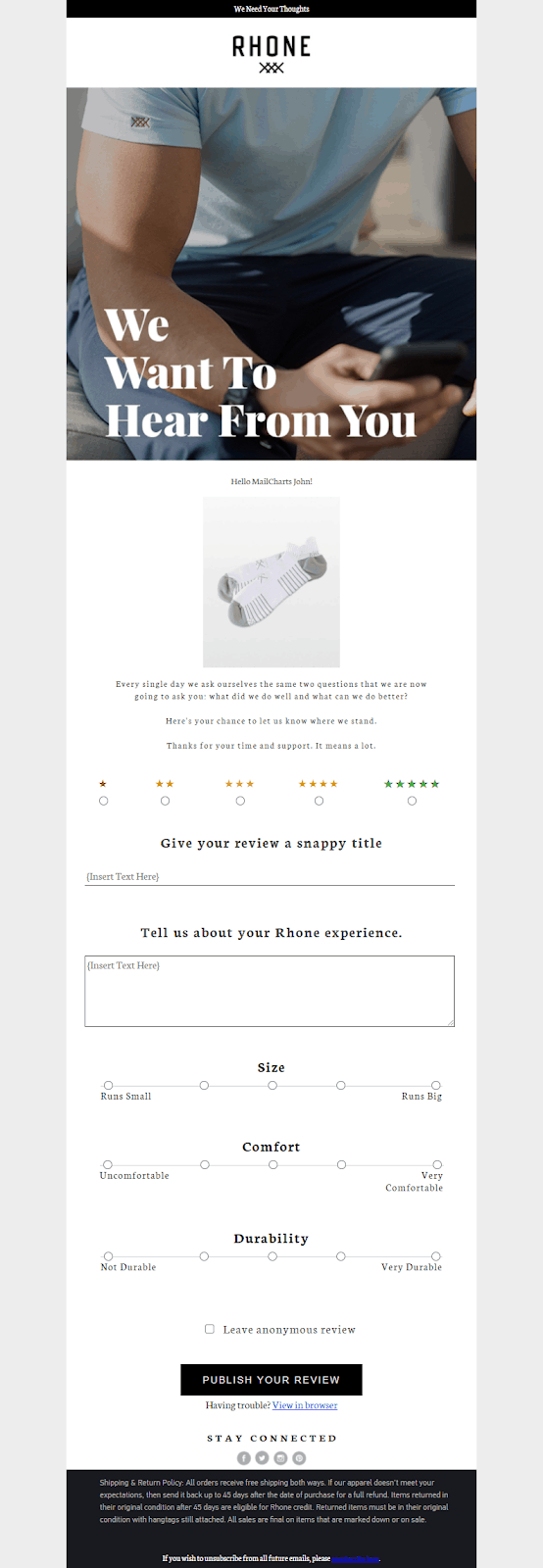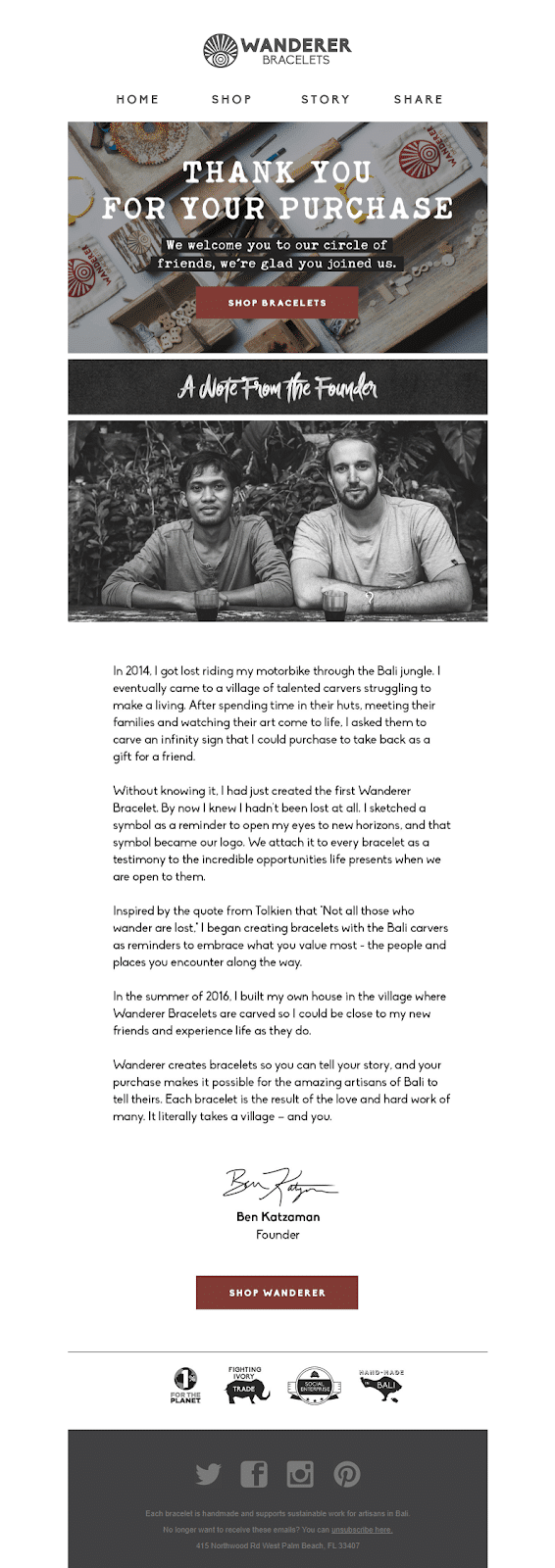Once a prospect has crossed the checkout line, it’s easy to think the job is done. After all, that’s the hardest part, right? Converting a prospect into a customer is the ultimate goal. It’s what marketing teams around the world are measured on, but what happens once they’ve hit the buy button?
Acquiring new customers is essential for business growth. The more you grow your database, the better recognized your brand becomes which gives you greater opportunities to convert new customers. But, the true secret to success lies in retaining your new customers.

What is customer retention?
Customer retention refers to your ability to keep customers over time. Customer retention tactics are designed to increase customer value and encourage them to become repeat purchasers. They are a collection of activities and initiatives that boost the overall customer experience and keeps you at the top of the shopper’s mind.
You can measure your customer retention rate using the following formula:
((No. customers at the end of the period – no. of new customers acquired during the period) / no. customers at the start of the period) x 100
So, for example: ((1,000 – 300)/750) x 100 = 93% retention rate.
Why is customer retention important?
Customer retention significantly increases your ROI. Not only is it five times less expensive than acquiring new customers, but the success rate of selling to an existing customer is 60-70% as opposed to the 5-20% success rate of selling to new customers. Even a small increase in retention can see profits improve from 25-95%.
Customer retention is a clear indication that your brand is doing something right. You’re satisfying your customers’ needs and giving them a reason to trust your brand more than your competitors. It can also help you identify periods of prolonged churn. It’s only once you have recognized the problem that you can begin to identify the potential causes and fix them.
The post-purchase experience
There’s no better time to begin your customer retention strategy than immediately post-purchase.
You’ve already done the hard work convincing shoppers to convert. Now it’s time to develop a customer experience that keeps them coming back for more. There are three key areas of the post-purchase experience that are essential for building customer loyalty.
These are our best practice tips to ensure that your customers’ post-purchase journey is optimized and working to inspire the loyalty your brand deserves.
Transactional emails
Transactional emails are significantly different to marketing emails.
For starters, transactional emails are one-to-one. They generally contain the important information a reader needs to complete a transaction or process. A typical example of this would be an email receipt. They’re triggered by customer actions and typically require very little design time.
But that doesn’t mean they have to be simple. A few very simple steps can elevate your transactional emails from basic to brilliant.
Personalization
Never miss an opportunity to personalize your email marketing, including your transactional emails. Even basic first name personalization has an impact with the reader. 71% of consumers are frustrated when they have an impersonal shopping experience. Don’t lose customers when personalization is a simple tactic you can implement with even the most minimal customer data. A little goes a long way and helps customers feel like more than an order number when you personalize your transactional emails.
Product recommendations
The importance of product recommendations continues to grow. Modern consumers regard product recommendations as an essential part of their experience. Adding AI-powered recommendation blocks to showcase products related to the items purchased will give readers another reason to return to your website. Pottery Barn includes helpful product recommendations as part of its order confirmation transactional emails. By giving the block header, ’these items complement your current order’, it’s making the recipient consider placing another order as soon as they finish this transaction.
Social sharing
Turning customers into brand ambassadors is one of the core benefits of a loyal customer base. Including social sharing buttons so shoppers can show-off their latest purchases is a great step toward making them advocates for your brand. A simple CTA in these emails calling for shoppers to connect with your brand on social media is the first step toward turning them into ambassadors. It’s also a great way to kick-start their omnichannel experience with your brand.
Loyalty programs
A vital element of every ecommerce marketing strategy, a loyalty program can be the difference between customer retention and customer churn.
Customer loyalty goes hand-in-hand with customer retention. Loyal customers choose to repeatedly return to your brand because of the delightful experience they have with you. There are many ways you can use loyalty programs to retain your customers for longer.
Point-based loyalty
Give back to customers every time they interact with your brand using a point-based loyalty program. You can assign points for specific actions to drive and incentivize customer loyalty and retention. An example of this would be to assign 100 points for a product review and 50 points for referring a friend. Setting point-based milestones also allows you to reward those active customers when they earn enough points.
This example from DIFF eyewear clearly outlines how its reward scheme works right from the very first email. By awarding customers points for connecting on social media channels it’s encouraging customers to get to know the brand and engage with it on a regular basis.
Tier-based program
Similar to a points-based loyalty scheme, a tiered loyalty program allows customers to earn points with every purchase or specific interaction. Once they reach a specific spending target, customers can rise to a new level and access more benefits and perks. This type of program is especially good for creating an atmosphere of exclusivity. It’s also a great incentive to drive shoppers to increase their average order value in an attempt to reap the benefits of your program.Toms outline the benefits of joining its loyalty program and show shoppers what they can expect to receive the more they return to the brand.
Gamified loyalty programs
Gamification is a growing tactic used by marketers to engage customers. It’s a great tactic because it forces the shopper to stop and interact with your marketing. You can incorporate gamification into your loyalty programs by empowering them to interact with your brand to earn badges or complete challenges. Incentivizing actions such as repeat purchases or review submissions to earn badges helps encourage customers to return.
Fitness brand Peloton keeps users on track with badges so they can track their progress and set goals. This keeps them coming back and adds a healthy dose of competition to their experience as they try to beat their friends records.
These are just three examples of loyalty programs that will help drive customer retention. The key to a successful loyalty plan in understanding your customers. If you know what drives them to hit the buy button, maximize that with an incentivized program that keeps them coming back to you.
Post-purchase automations
In addition to your transactional email, there are a number of post-purchase automations you need that’ll boost the customer experience. While there are many automations that improve the customer journey, these ones should immediately follow a customer’s transaction with you.
Added value content
Running a post-purchase campaign that provides additional value to your customers is a great tool to enhance overall experience. Especially useful for brands who sell high-ticket or luxury items, sending readers educational hints and tips about their new purchase proves that you are a brand that cares. When you demonstrate that you care about the customer and your product beyond making the sale, you’re demonstrating your brands’ commitment to their experience.
NEST New York ensures that every customer has the best possible experience with its products thanks to its educational post-purchase campaign. It also helps establish the brand’s position as industry experts. When asking shoppers to spend a significant amount of money, showing your passion for the product and customer experience will keep them coming back for more.
Feedback request
Think beyond a simple product review. There are two stages in the customer journey where they are most engaged with your emails – when they first sign-up to your newsletter, and after they’ve made a purchase. Utilize this by asking them to complete a survey or provide feedback. Consider areas you would like to improve and ask for customer input.
One of the key driving factors behind customer loyalty is feeling valued. By clearly showing that you value their opinion and giving them a chance to have direct input into your brand, customers will feel more invested. And when a customer is personally invested in your brand, they’ll return to see if you’ve actioned their feedback.
Men’s apparel brand Rhone asks for a complete review of their product and experience in this review request email. It works because the questions are simple and the reader can complete it within the email. It’s simple and easy, but the message ’we want to hear from you’ let’s the shopper know the brand values their opinion.
Thank you emails
Another way to make your customers feel valued is with a simple ‘thank you’ automation. It’s also a great way to establish a stronger, more personal relationship with your customer. This particular tactic works well if you’re trying to spread the message about your brand mission. As well as thanking shoppers for choosing you, use this opportunity to educate them about your brand.
In this example from Wanderer Bracelets, they fully utilize the customers’ high engagement levels and give the reader exclusive insight into the brand, its mission and its ethos. By showing the customer the positive effects of their actions, they’re more likely to return to the brand. Not only do they love the product, but shopping with them makes the consumer feel good.
It’s amazing what a simple ‘thank you’ message can do.
Which strategy to pick?
Developing a post-purchase strategy from scratch is not going to happen overnight. The perfect strategy would combine all three in a perfect customer experience that inspires loyalty.
But, if you’re looking for a quick win, building new triggered post-purchase campaigns are guaranteed to drive customers to return. For a ROI boost, personalized product recommendations are a key factor in customers’ decision-making process. Adding them to your email marketing and transactional emails will allow you to reap immediate benefits.
In the long-term, loyalty programs are going to inspire the most loyalty. For customers, this is because there’s a direct correlation between shoppers spending money and getting something back in return.
When choosing which strategy to adopt, it’s important to understand your customers. Realize what their goals and motivations are. If your brand sells luxury items, a point-based loyalty program may not be right for you as they may not be shopping with you frequently. On the other hand, receiving regular hints and tips about caring for their purchase may lead them to value your communications more in the future.
Whichever you choose, always keep your customers’ needs at the front of your mind.
Conclusion
Retaining existing customers is as important as acquiring new ones. And your mission to retain them needs to begin from the minute they convert.
The perfect post-purchase campaign should include:
- Transactional emails
- A loyalty program
- Automated aftersales content
Combining all of these will provide the ultimate post-purchase experience that will keep customers coming back again and again.

